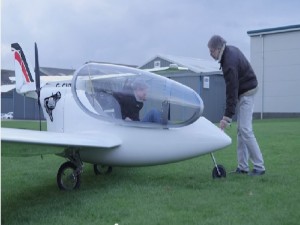According to the Federal Aviation Administration, nearly 7,000 laser strikes on aircrafts were reported in 2017.
“In cities like Chicago this problem is real as people are shining laser pointers on aircrafts during critical phases of flight, which is a big nuisance to pilots,” said Jason Keleher, a professor and chair of chemistry at Lewis University, who was approached by the aviation department at Lewis University to collaborate on a solution to this growing problem .
“Is it a bunch of kids? Is it accidental? Is somebody just like, ‘I bet you can’t hit that plane with those lasers.’ It’s really hard to identify who’s actually doing it. It’s a very interesting problem,” said Keleher, one he, the project’s principal investigator, was prepared to solve.
Keleher explains that although the lasers don’t cause permanent eye damage to pilots as they maneuver the aircraft, it does cause temporary flash blindness which may make it difficult for pilots to see control systems as they prepare for take-off and landing. He explains it is similar to the way high beams can disorient a driver upon direct exposure.
(more…)




